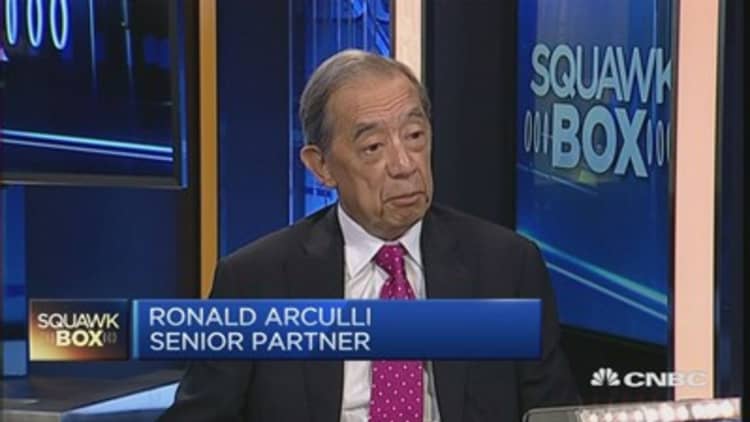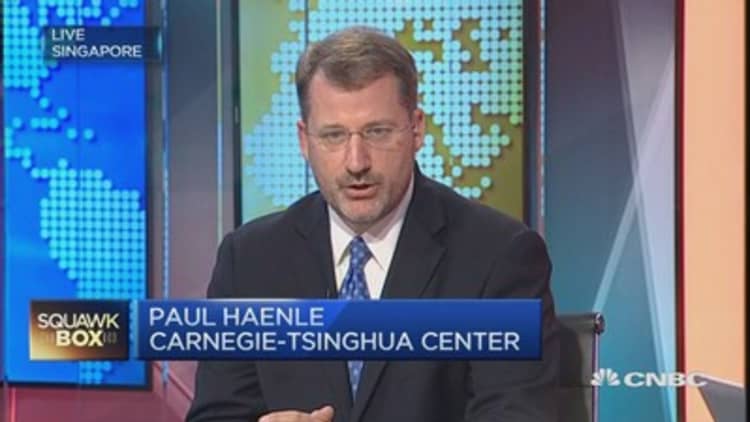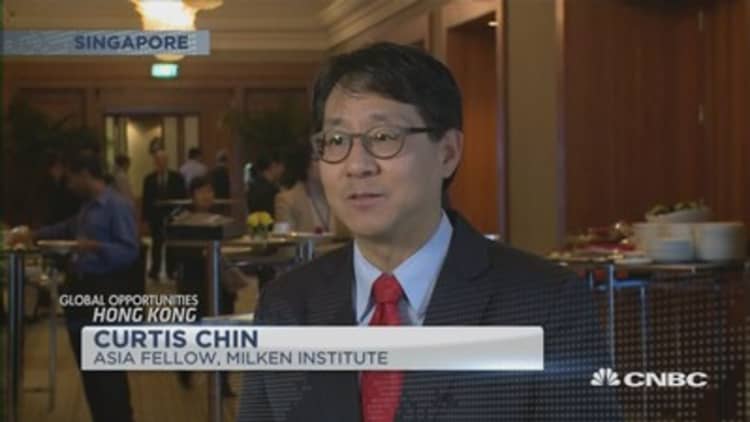


One year ago, as Hong Kong protesters fought against a proposed electoral rule change by Beijing, social media, and technology more broadly, was key to spreading the message, so that it was heard not just by protesters but around the world.
Even those not attending were able to get involved; Showing solidarity with the protest was as simple as sharing an image of a yellow umbrella on Facebook, Instagram and Twitter accounts to symbolize the movement that carried its name.
Hong Kong is run by Beijing in a 'one country, two systems' policy, which enables the island to enjoy freedoms not permitted for mainlanders. It was against this political backdrop that thousands flooded the streets of Hong Kong to protest against proposed changes to Hong Kong's electoral system, in which China would screen all nominees in the first direct elections for Hong Kong's leader, due to be held in 2017.
The Hong Kong Federation of Students and Scholarism, a student activist group, were the first to protest outside government headquarters, on September 26, 2014. The Occupy Central with Love and Peace movement joined shortly, elevating the protests to a mass civil disobedience campaign.
Early in the action, it became clear that the battle would be waged in part via digital means. Twitter reported that 1.3 million tweets about Hong Kong were recorded between September 26-30, the beginning days of the so-called Umbrella Movement.
On September 28, the Hong Kong government reacted to the widespread protests by deploying policemen who used pepper spray, tear gas and batons to drive back protesters. Images were captured and shared on the internet by protesters who used umbrellas and face masks to defend themselves.
"[Social media] was definitely a documenting function and it also helped in coordinating and mobilizing the protesters especially when there were several protest sites," Tracy Loh, visiting fellow at the Department of Communications and New Media in the National University of Singapore, told CNBC in an email interview.
These images and information were not featured on major Chinese news outlets, which were focused on the then-upcoming 65th anniversary of the founding of the People's Republic of China on October 1.
"When images of police brutality went viral, it helped to spur emotions and images of the size of the protests helped to 'galvanize the troops'," said Loh.
Facebook was the social media vehicle of choice for most people involved in or following events, according to prominent figures of the Umbrella Movement, Joshua Wong and Nathan Law.
"I mainly used Facebook to update protest information quickly [as] the Scholarism page has over 315,000 likes," Joshua Wong, the 18-year old founder of Scholarism, told CNBC in a phone interview.
Read MoreHong Kong 1% shun Europe markets as well as China
Nathan Law, the Secretary General of Hong Kong Federation of Students, added that although Hong Kong people primarily used Facebook and posted in Cantonese, he also translated posts into English and post them on Twitter.
There were several Facebook pages created for the purpose of verifying information as well, such as HKVerified, which provided credible bilingual news and information updates about the protests.
Loh added that social media also played a complementary role to traditional media including newspapers and broadcast news, helping bring attention to the movement.
"Many images and stories that first appeared on social media platforms were picked up by traditional media to spread the information to audiences that were not online," she said.
International support
The use of technology to facilitate the Umbrella Movement was not limited to social media.
Google Doc Spreadsheets were created to organize the practical logistics for several protests at different locations. Donations would flood in for the items listed in the spreadsheets. Protesters could also find out where the nearest public toilets and resting points were.
One of the more interesting apps used during the protests was FireChat, a messaging app which cleverly relies on Bluetooth instead of internet connectivity. This was a key messing app used during the Umbrella protests when telecommunications networks' services came under pressure from overcrowding in certain areas.
Aside from rallying Hong Kong people into action, technology and social media was also a "good channel for [garnering] international support," said Wong.
Hong Kong protesters used the hashtags #Ferguson and #Arabspring to respectively compare the police brutality in Missouri, United States, and the pro-democratic uprisings that swept the Middle East with events in Hong Kong.
It appears the confluence of issues helped make Hong Kong's protests more relevant to international social media users and drew in more supporters for the democratic cause.
Rallies in support of Hong Kong's Umbrella Movement were held in at least 64 cities including London, New York and Taipei, according to the Facebook page of advocacy group United for Democracy: Global Solidarity with Hong Kong.
"The international support is also a way to keep pressure on the government and to increase global concern," Wong added.
Future of Hong Kong
The Umbrella Movement created momentum for Hong Kong's pro-democracy supporters, even though the protests ended without concessions from the government.
This was not seen as a loss, said Law, as "more and more people are devoted to constructing a strong civil society" in Hong Kong, and several other organizations have also sprung up after the Umbrella Movement in support of democratic ideals.
In June Hong Kong lawmakers voted down the controversial electoral reforms in which potential chief executive candidates have to be pre-screened by a pro-Beijing nominating committee. Beijing was adamant about not offering an alternative election framework.
This stalemate increases the uncertainty surrounding the 2017 elections for Hong Kong's chief executive.
Wong concludes: "Figuring out how to continue the Umbrella movement and [driving] Hong Kong people's determination for a better future is key."
It is almost certain there will be a large social media element to this continuing campaign.

